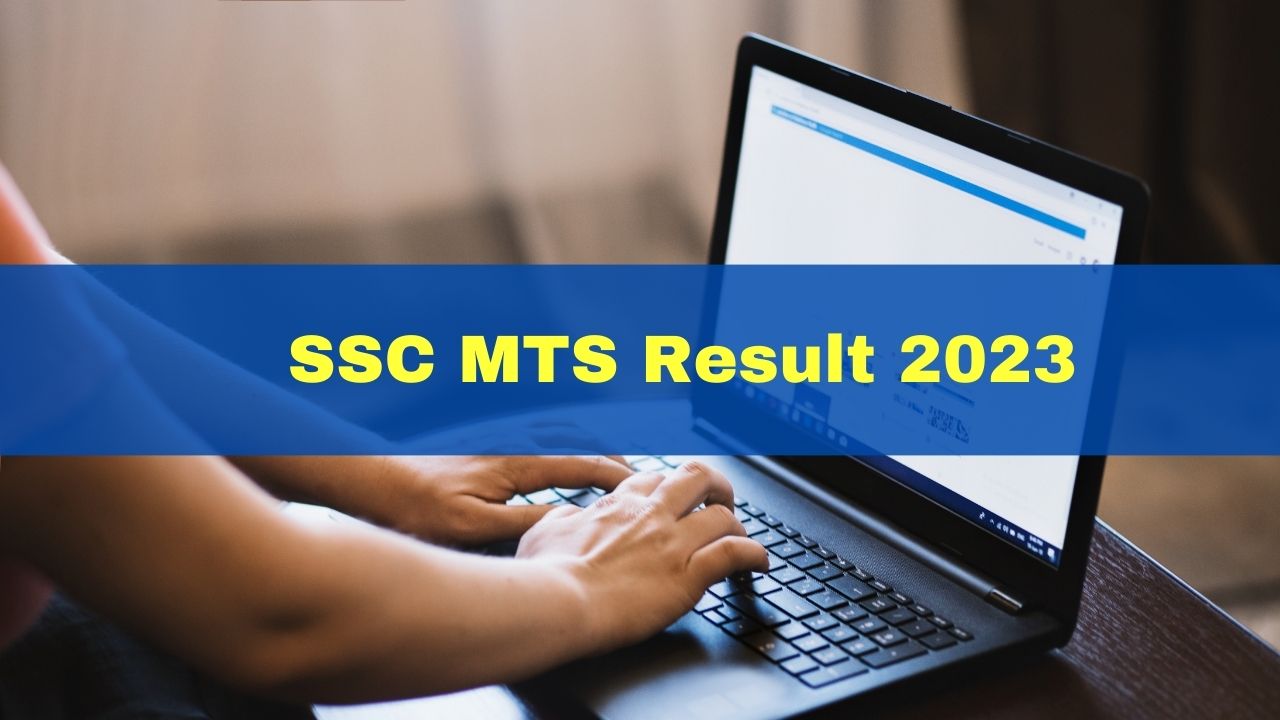Introduction
The Staff Selection Commission’s Multi-Tasking Staff (SSC MTS) Tier 1 examination is a crucial step for candidates aspiring to secure government jobs. In this comprehensive guide, we delve into the intricacies of SSC MTS Tier 1 marks, unraveling the evaluation process, and shedding light on the factors that influence candidates’ performance.
Navigating the SSC MTS Tier 1 Examination: Overview and Significance
The SSC MTS (Multi-Tasking Staff) and Havaldar 2024 exam notification is expected to be released on May 7, 2024. The Staff Selection Commission will release the SSC MTS notification 2024 online on its official website to kick start the SSC MTS recruitment 2024. The Commission will also start the SSC MTS applications 2024 with the releease of official notification. The last date to apply for the SSC MTS 2024 exam will be June 6, 2024. The Commission released the SSC MTS exam dates 2024 in its official SSC exam calendar 2024-25. The SSC MTS 2024 exam will be conducted in July-August 2024. The regional websites of the Commission will start releasing the SSC MTS application status around 20 days before the start date of exam and the SSC MTS admit card will be released four days before the exam date of the candidate.
Earlier, the SSC MTS 2023 answer key was released online on ssc.nic.in. The candidates are suggested to download the SSC MTS answer key and calculate their marks. The Commission released the SSC MTS 2023 Marks and Scorecard on December 27, 2023. The SSC MTS 2023 final answer key was available till January 5, 2024. The SSC MTS 2023 marks and scorecard was available till January 10, 2024. The candidates are suggested to compare their marks with the official cutoff and in case of any discrepancy in the result, the candidate should immediately communicate this to the Commission.
SSC MTS 2023 result for the MTS Posts and Havaldar was released on December 18, 2023. The Commission also released the SSC MTS 2023 Cutoff for the MTS posts and Havaldar posts with the result. The Commission selected 1,786 candidates for the Document Verification process. The Commission mentioned the roll number, names and the category of the selected candidates. Earlier, the Commission increased the number of SSC MTS Havaldar vacancies from 360 to 392. The result of 57 candidates were withheld and their roll numbers were released separately. SSC MTS 2023 exam was conducted from September 1 to 14, 2023.
To comprehend SSC MTS Tier 1 marks, it’s essential to grasp the significance of the examination in the overall selection process. This section provides an overview of the SSC MTS Tier 1 exam, emphasizing its role as the initial screening stage for candidates.
SSC MTS Tier 1: Gateway to Further Selection Stages
Explore how the Tier 1 examination acts as the gateway for candidates aiming to progress to subsequent stages of the SSC MTS recruitment process. Understand the weightage of Tier 1 marks in determining eligibility for Tier 2 and beyond.
Exam Pattern: Sections, Duration, and Question Types
Break down the SSC MTS Tier 1 exam pattern. Explore the sections, duration, and types of questions that candidates encounter during the examination, setting the stage for a detailed understanding of the marking system.
Decoding the Marking Scheme: How SSC MTS Tier 1 Papers are Graded
SSC MTS CBT exam is held in two sessions- Session 1 and Session 2. Both sessions ofSSC MTS CBT are conducted the same day. In 1st session, you have to attempt 40 questions and in 2nd session, you have to attempt 50 questions. Each question consists of 3 marks. You will be given 45 minutes to finish each session. For PST/PST round, SSC has some physical standards which you need to meet during the Physical Test.
Quick Links:
- Follow These Preparation Tips to Clear SSC MTS Exam 2024.
- Attempt SSC MTS Mock Test Series for Free!
- Keep These Documents Ready to Download SSC MTS Admit Card 2024.
Until 2022, SSC MTS exam had 2 papers – Paper 1 (Computer Based Exam) and Paper 2 (Descriptive Paper) which was a Qualifying paper. In Paper 1, you were to attempt 100 questions in 90 minutes. In Paper 2, you were supposed to write a short Essay and a Letter in English or any language included in Schedule VIII of the Constitution. The language of the exam was Bilingual (Hindi and English).
Understanding how SSC evaluates Tier 1 papers is fundamental to interpreting the marks obtained by candidates. This section delves into the marking scheme, shedding light on the allocation of marks for correct and incorrect answers.
Correct Answers: Earned Marks and Positive Scoring
Explain how candidates earn marks for correct answers in SSC MTS Tier 1. Break down the scoring system and provide examples to illustrate how positive marks contribute to a candidate’s total score.
Incorrect Answers: Negative Marking and its Implications
Unveil the concept of negative marking in SSC MTS Tier 1. Explore how incorrect answers lead to deductions, emphasizing the importance of strategic answering to mitigate the impact of negative marking.
Total Marks and Raw Scores: Calculating the Aggregate
Guide candidates on how to calculate their total marks and raw scores in SSC MTS Tier 1. Provide a step-by-step breakdown of the process, incorporating examples for clarity.
Normalization Process: Ensuring Fair Evaluation Across Shifts

In instances where the SSC MTS Tier 1 examination is conducted in multiple shifts, a normalization process is employed to ensure fairness. This section elucidates the normalization procedure, offering insights into its necessity and impact on candidates’ marks.
Shifting Perspectives: Understanding the Need for Normalization
Explain why normalization is essential when the SSC MTS Tier 1 exam is conducted in multiple shifts. Discuss the variations in difficulty levels among different shifts and how normalization ensures fairness in evaluating candidates.
Normalized Scores: Balancing the Scales Across Shifts
Delve into the intricacies of how normalized scores are calculated. Provide a step-by-step explanation, including the role of mean and standard deviation, showcasing how candidates’ marks are adjusted to a common scale.
Cutoff Marks: The Threshold for Qualification and Beyond
Cutoff marks play a pivotal role in determining candidates’ eligibility for the next stages of the SSC MTS recruitment process. This section explores the concept of cutoff marks, factors influencing them, and their significance for candidates.
Defining Cutoff Marks: The Minimum Requirement for Success
Define what cutoff marks entail in the context of SSC MTS Tier 1. Discuss how cutoffs act as the minimum threshold that candidates must surpass to qualify for Tier 2 and subsequent stages.
Influencing Factors: Variables Affecting Cutoff Determination
Unveil the various factors that influence the determination of cutoff marks. Discuss historical trends, the number of vacancies, and the overall performance of candidates as key variables shaping cutoffs.
Post-Cutoff Scenario: Qualification and Preparing for Tier 2
Explore what lies beyond the cutoff marks for successful candidates. Discuss the qualification criteria for Tier 2, emphasizing the importance of strategic preparation for the subsequent stages.
Result Declaration: Understanding SSC’s Communication of Marks
Once the evaluation process is complete, SSC communicates candidates’ marks through result declarations. This section guides candidates on how to access their marks, interpret result notifications, and understand the implications of the announced scores.
Checking SSC MTS Tier 1 Marks: Online Platforms and Procedures
Provide a step-by-step guide on how candidates can check their SSC MTS Tier 1 marks. Highlight the online platforms and official websites where results are typically published, ensuring candidates can access their scores with ease.
Understanding Result Notifications: Merit Lists and Individual Scores
Decode the language used in SSC’s result notifications. Explore the information conveyed through merit lists and individual scorecards, helping candidates interpret their performance in the context of overall merit and sectional scores.
Post-Examination Strategies: Analyzing Performance and Preparation for Tier 2
Armed with knowledge about SSC MTS Tier 1 marks, candidates can strategize their approach for future stages. This section provides guidance on how candidates can analyze their performance, identify areas of improvement, and prepare effectively for Tier 2.
Self-Evaluation: Analyzing Strengths and Weaknesses
Encourage candidates to perform a thorough self-evaluation. Provide tools and strategies for analyzing their strengths and weaknesses based on their Tier 1 performance, helping them tailor their preparation for Tier 2.
Tier 2 Preparation: Building on Tier 1 Foundations
Guide candidates on how to transition their preparation from Tier 1 to Tier 2. Emphasize the continuity of effort, incorporating lessons learned from Tier 1 to strengthen their foundation for the subsequent examination.
Conclusion: Navigating the SSC MTS Tier 1 Marking Maze
Understanding SSC MTS Tier 1 marks is pivotal for candidates navigating the labyrinth of government job examinations. From the intricacies of the marking scheme to the significance of cutoff marks, this guide equips candidates with the knowledge needed to decode their performance and plan their journey toward success in the competitive realm of SSC MTS recruitment.

